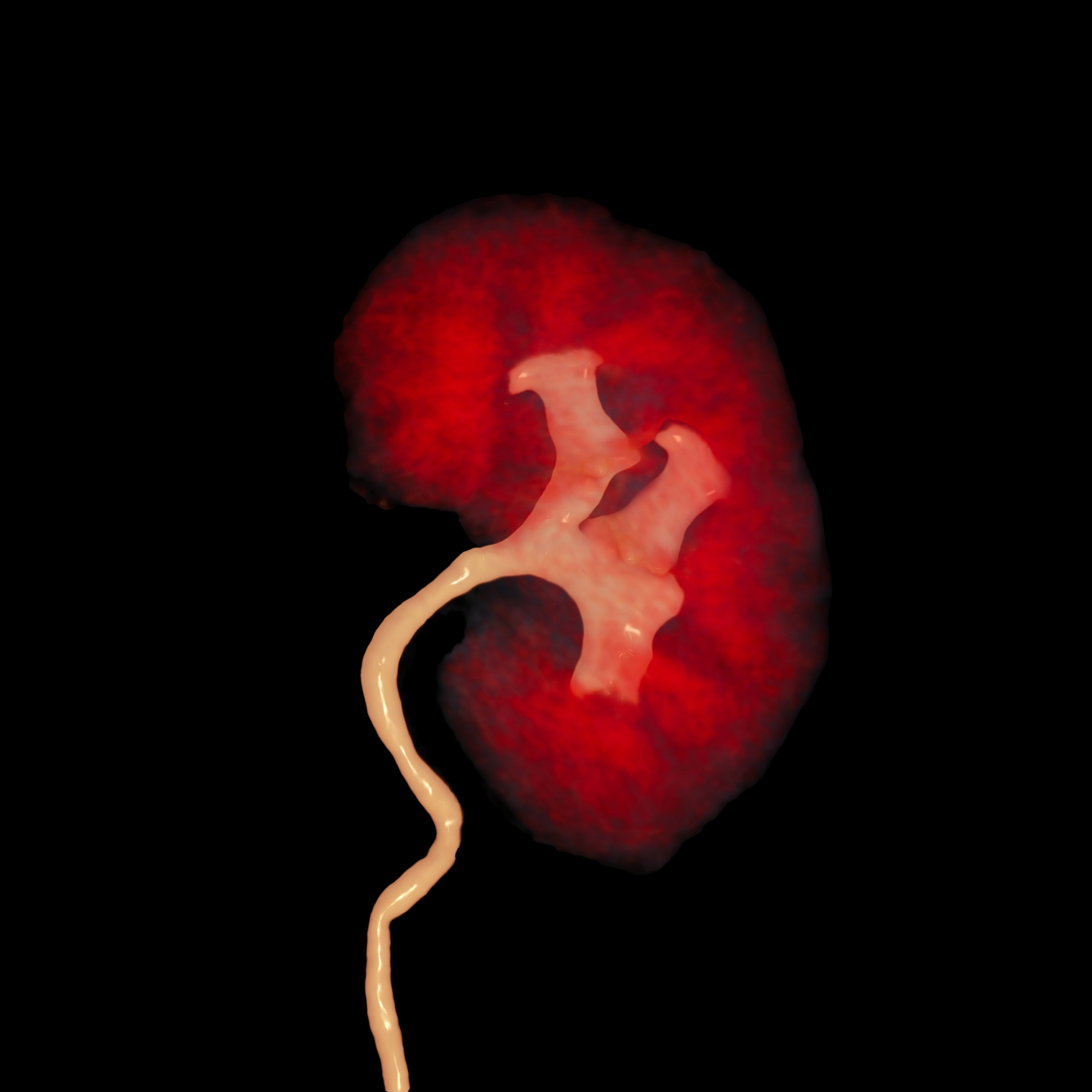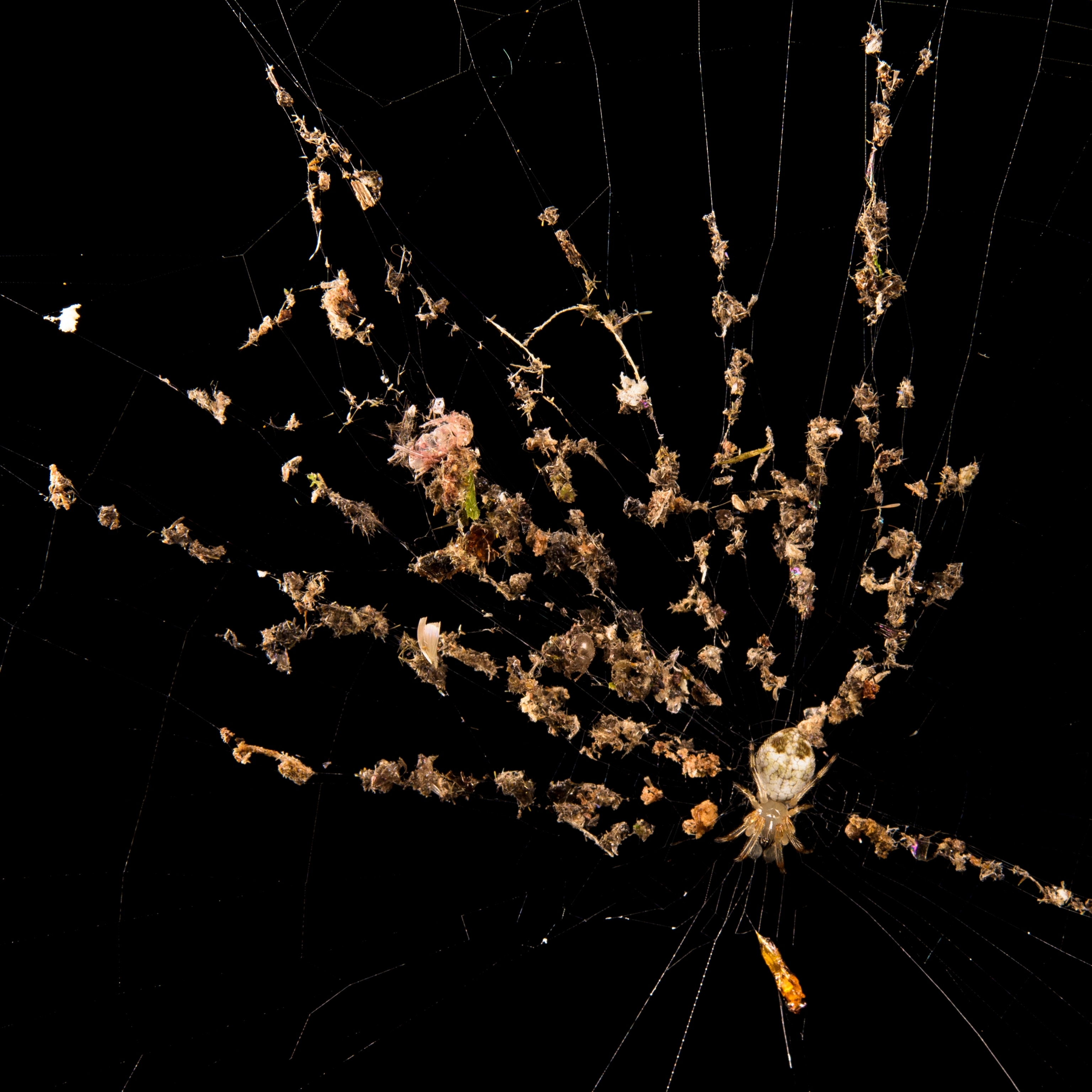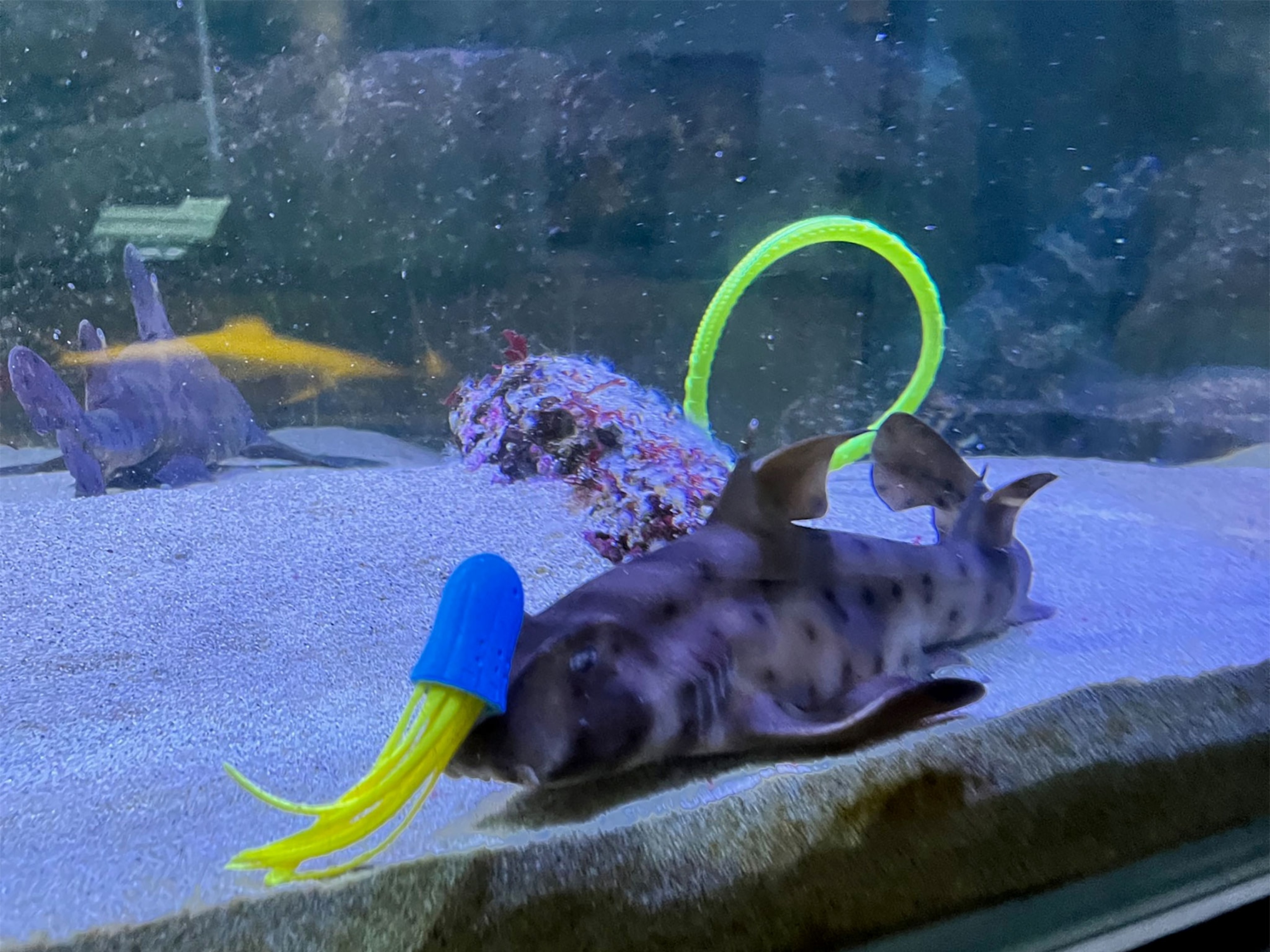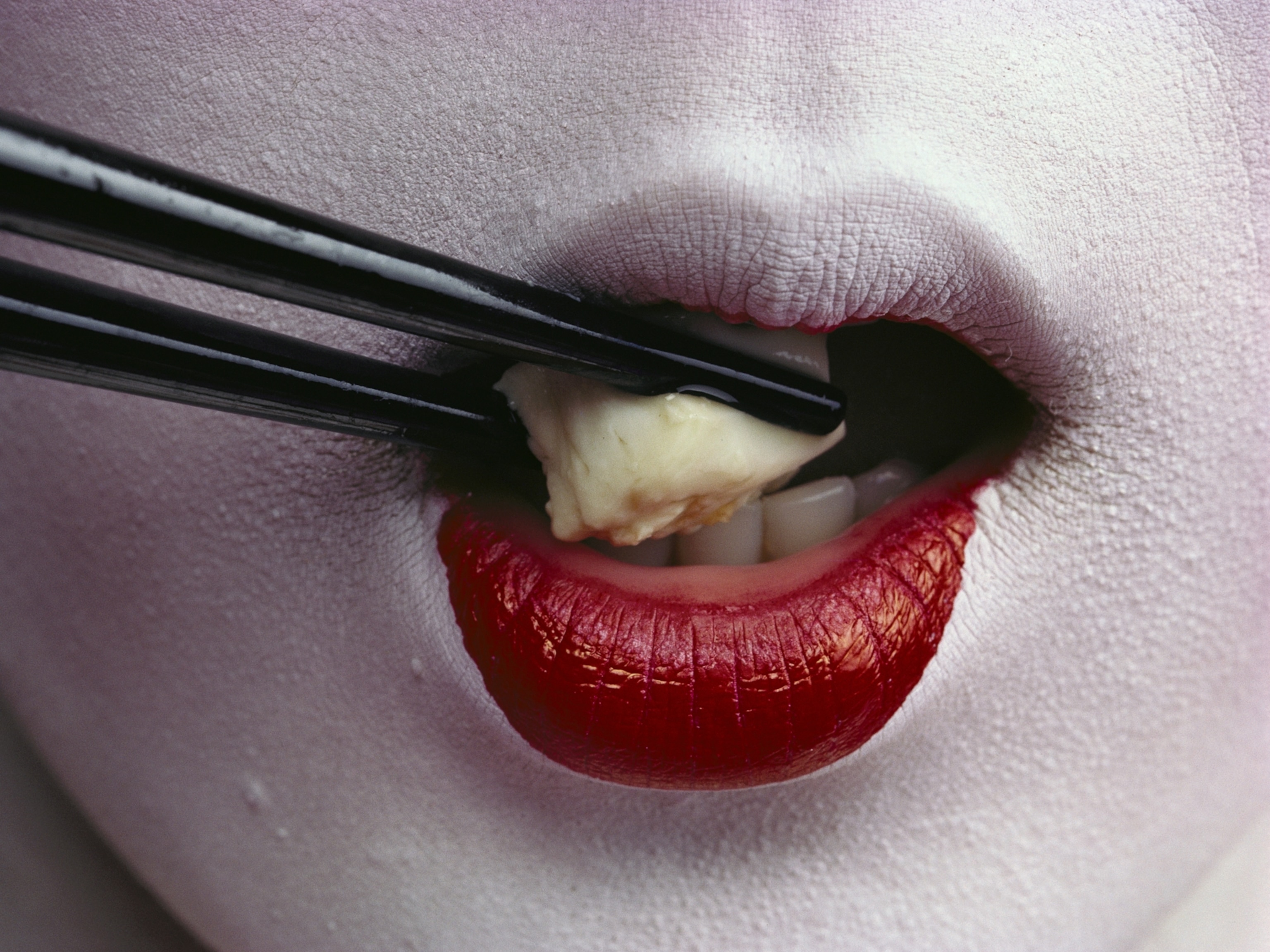
This Ocean Creature Makes Its Own Invisibility Cloak
In the open seas, the only way to hide is to disguise yourself as water.
Life under the sea can be nasty, brutish, and short if you don’t have an effective form of camouflage.
The cuttlefish’s skin, for instance, holds some ten million color cells, allowing it to impersonate a chunk of a coral, a clump of algae, or a patch of sand.
But for animals in the open ocean, there's no place to hide. For them, the best camouflage color is no color at all—transparent bodies allow them to partially blend into their watery surroundings.
And now, a scientist has discovered that some of these animals possess yet another magician’s trick: antireflective coatings that render them nearly invisible.
“They are really hard to see when they're in the water,” says Laura Bagge, a marine biologist and doctoral student at Duke University. “The only thing that gives them away is their eyes. The retina has to be pigmented. That's the way it collects light.”
Aliens Among Us
Bagge is a specialist on invisible crustaceans—most notably, predators known as hyperiid amphipods. They’re related to sand fleas, except that they can grow up to seven inches and look much creepier. (One species, Phronima sedentaria, is rumored to have been the inspiration for the monstrous alien queen in the 1986 film Aliens.)
Bagge’s fascination with the invisible animals stems from her own close encounter a few years ago, while aboard a research ship collecting specimens.
“The first time we looked at what we had caught, there were a whole bunch of animals in the bucket, and I was looking at all these black, scary-looking fish,” she says. “I stuck my hand in the bucket to try to reach in and grab something else, and instead I hit something that was hard, but I couldn't even see it. I pulled my hand out of the bucket and it looked like a glass animal.”
That's a nice trait to have when you're swimming in the open ocean among a lot of fish that have upward-facing eyes. "You'll just see them floating around, looking for their next meal, and if you're transparent, then it's good, because then you don't have a shadow, you don't have a silhouette," says Bagge.
Still, Bagge was curious about why these crustaceans are so difficult to see. Although transparency is a nifty camouflage mechanism, it doesn’t render objects completely invisible. You can, for instance, see a clear drinking glass or a sheet of cellophane.
That’s because when light encounters a transparent object, not all of it passes through. Some of the light is reflected back at us, allowing us to see some details, such as shape and size.
So, even in the open water, transparent hyperiids might have their cover blown by sunlight and moonlight shining down on them, striking at an angle that can make them more visible to predators. “Any reflections that hit you from above are going to make you just flash really brightly against the darker background,” says Bagge.
Hyperiids are also vulnerable to certain predators—like the deep-sea dragon fish—that use bioluminescent searchlights to hunt for their meals.
Shag Carpet of the Sea
But Bagge discovered that some hyperiids enhance their invisibility by making use of antireflective coatings.
This is where physics comes into play. Light slows down when passing through anything that isn’t a perfect vacuum. A measurement called the refractive index (RI) tells us how quickly light travels through various types of materials. So, if water ice has a RI of 1.31, that means light travels 1.31 times faster in vacuum than it does through ice.
If light smacks into a material with a higher refractive index, the sudden change can create a very bright reflection. (Think of what happens when you shine a flashlight on a transparent glass window at night.)
And that’s what threatens the hyperiids—the light passes through seawater, which has an RI of 1.34, and then collides with the transparent crustacean, with an RI of 1.57. The result? Cloaking shields down.
But after studying seven types of hyperiids, Bagge found one species, Cystisoma, whose legs were covered by extremely tiny structures, called nanoprotuberances.
“It kind of looks like shag carpet,” says Bagge, whose research appeared recently in Current Biology. “The idea is that it basically dampens the reflections, softens reflections in the same way that hanging carpet on a recording studio softens sound waves.”
Here’s how it works: Each of the tiny structures is shaped like a mountain. The light initially hits the tips, which have a small surface area. As the light works its way down the mountain, the surface area increases until it reaches the surface. So, instead of directly slamming into the hyperiid, the light passes through a buffer that gradually increases the refractive index and reduces the reflection.
These same nanotuberances have been found on insects. Scientists call them “corneal nipples” because they help camouflaged bugs remain concealed by reducing the glare of light reflecting off their multifaceted eyes.
Bagge ran some computer models, simulating the lighting conditions in the ocean, and found that the nanotuberances reduced surface reflection by some two orders of magnitude. She suspects that the tiny structures are found on Cystisoma’s legs because they account for a very large portion of its body.
Say Hello to My Little Friends
Bagge didn’t find any nanotuberances among the other species she studied, but she did discover something equally intriguing: a layer of microscopic spheres covering the hyperiid’s bodies.
She believes that the spheres are living organisms.
“We have images of bacteria on electron microscope, and these looked very similar to that,” Bagge says. “They basically had these little threadlike structures coming out of them that attach to surfaces, and that's something that most bacteria have.” And, like bacteria, the spheres appeared to be reproducing by splitting in two.
Again, using computer models, Bagge measured the properties of the spheres and found they could reduce reflected light by fourfold. She suspects the organisms have a symbiotic relationship: The crustaceans get an antireflective coating and the bacteria get a mobile home.
Bagge plans to continue her research and collect more specimens—a challenging task since, well, they’re invisible. “You're just trying to look around for little black eye spots, or maybe the sunlight will be in such a way that you'll catch a glint of light on a reflection,” she says.
Instead of diving in the open ocean with little glass jars, Bagge hopes instead to use an underwater craft. “When you're in a submersible, we have really powerful spotlights from all directions,” she says, making it difficult for even invisible animals to hide.








